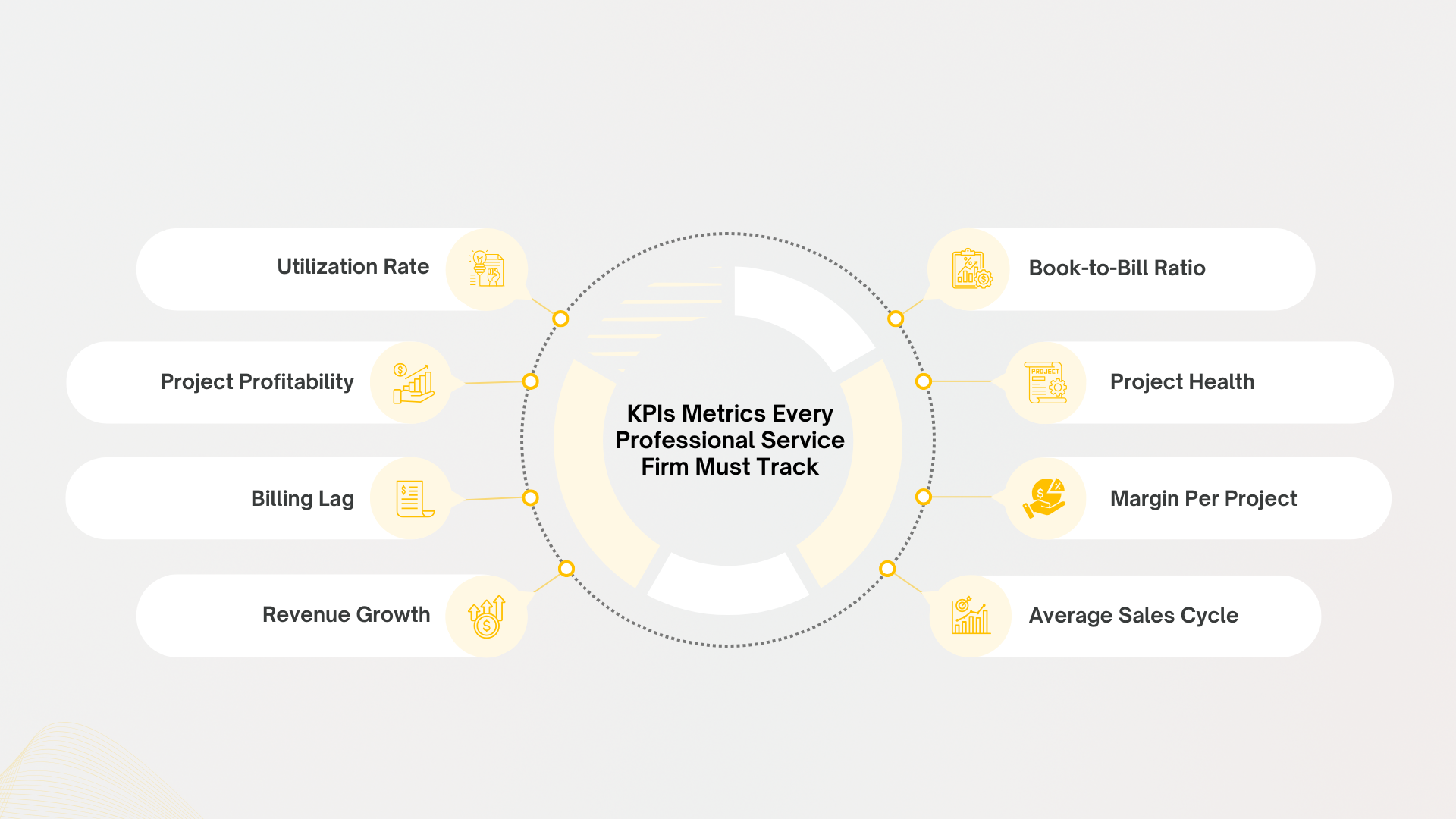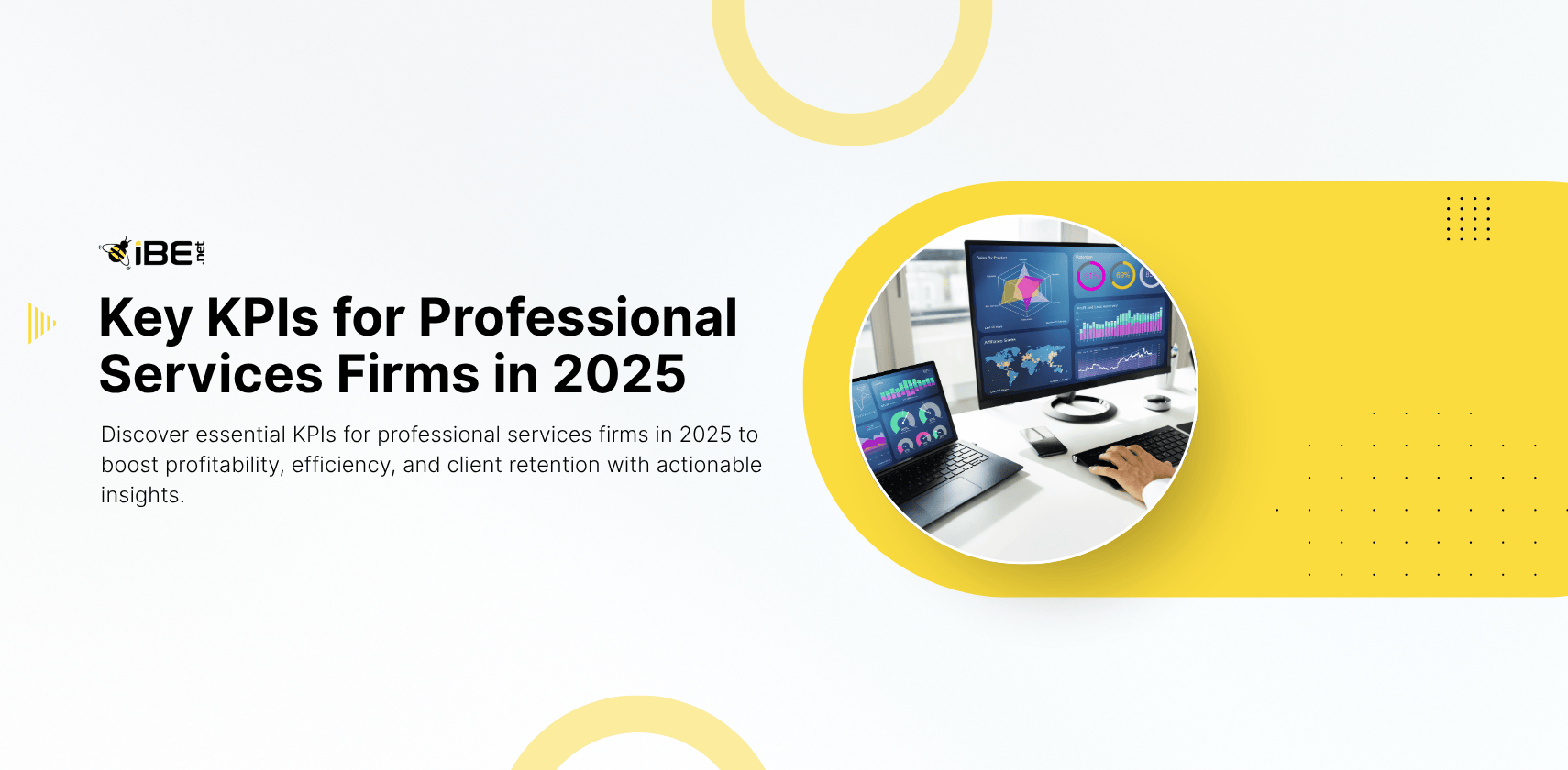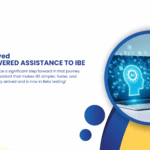KPIs for Professional Services Firms: Metrics That Matter in 2025
In the world of professional services, numbers tell powerful stories. They show how well your team works and how many projects are delivered. Because of this, tracking the right KPIs for professional services firms is essential. To stay ahead, leaders like you must now rely on data rather than guesswork.
To do that, keep a close watch on your professional services KPIs (Key Performance Indicators). These metrics go beyond numbers on a screen — they act as early signals, your compass, and your proof of success.
In this article, we’ll explain why KPIs for professional services firms matter and which ones to track in 2025 and beyond.
What Are KPIs and Why Do They Matter for Professional Services Firms?
Key Performance Indicators (KPIs) are measurable values that track your progress. Simply put, they show how effectively a person, team, or company meets its goals. In addition, they help you understand what’s working and what needs improvement.
KPIs are used across departments such as
CRM and sales KPIs,
HR performance metrics,
and finance. They help teams make smarter, data-driven decisions. For example, KPIs track billable hours, client satisfaction, and revenue growth. Over time, these numbers turn into insights that guide better business actions.
Furthermore, Gartner reports that more organizations are now using the Digital Execution Scorecard (DSE). This framework helps assess digital maturity and overall performance — proving how essential KPI tracking for professional services is to digital success.
How KPIs Help Professional Services Firms
By tracking the right KPIs, professional services firms can:
- 1) Spot inefficiencies early and take action faster
- 2) Predict upcoming revenue with better accuracy
- 3) Align teams more closely with business goals
- 4) Improve client satisfaction by meeting expectations
Want insights that actually drive results?
Let iBE help you visualize and act on your KPIs in real time.
Key KPIs Every Professional Services Firm Should Track in 2025 and Beyond
Choosing the right KPIs for professional services firms gives them a clear advantage. In 2025 and beyond, focusing on these key metrics will help make smarter decisions, boost efficiency, and drive sustainable growth.
1. Utilization Rate
The utilization rate shows how much of your team’s time is billable to clients. A healthy rate means your team is productive but not overworked. Moreover, tracking it helps spot underused staff and balance workloads effectively.
2. Project Profitability
Project profitability compares total revenue with related costs, including labor and materials. Tracking this helps firms identify their most profitable projects — leading to better pricing and smarter client choices.
3. Billing Lag
Billing Lag measures the time between service delivery and invoice generation. Keeping this delay short improves cash flow and speeds up revenue recognition.
4. Revenue Growth
Revenue growth tracks how your company’s income changes over time. It helps you see whether your business is growing or slowing down. Combining this with other professional services KPIs helps refine future strategies.
5. Book-to-Bill Ratio
The book-to-bill ratio compares new contract value to billed revenue in the same period. A ratio above 1 means growth, while below 1 suggests slowdown. Tracking this KPI helps plan resources and maintain stability.
6. Project Health
Project health gives insights into cost efficiency and team performance. Reviewing it regularly helps firms make data-based decisions and build lasting client relationships.
7. Margin Per Project
Margin per project shows how much profit remains after all costs. It ensures each project adds real value to your company. Analyzing margins helps manage pricing, control costs, and prioritize high-value work.
8. Average Sales Cycle
The Average Sales Cycle measures how long it takes to turn a lead into a client. By tracking it, firms can find bottlenecks and improve conversions — strengthening sales performance and long-term growth.

Concluding Words
In short, Key Performance Indicators (KPIs) are more than just numbers. They guide smarter decisions, improve productivity, and drive long-term growth. KPIs such as utilization rate, project profitability, and client retention highlight clear growth paths — helping firms act with confidence.
This is where iBE.net can truly help. From monitoring and measuring to acting on KPIs for professional services firms in real time, iBE gives teams the tools to improve profitability and forecast revenue effectively.
FAQs on KPIs for Professional Services Firms
Q. What are KPIs and why are they important for professional service firms?
A. KPIs are measurable values that show how well a company meets its goals. For service firms, they help track productivity, profit, and client satisfaction.
Q. Which KPIs should a professional service firm track?
A. Focus on key KPIs for professional services firms that affect revenue and efficiency — such as project profitability, utilization rate, and revenue growth.
Q. How do KPIs improve project profitability?
A. Tracking metrics like project profitability and margin per project helps find high-profit work, reduce costs, and improve pricing decisions.
Q. Can iBE.net help firms track and analyze KPIs effectively?
A. Yes! iBE.net provides tools for real-time KPI tracking, analysis, and reporting — improving profitability and client relationships.
Q. How do I choose which KPI is right for my firm?
A. Start with KPIs that match your business goals — for example, growth, process improvement, and customer satisfaction. Begin simple, track often, and expand as you grow.
Learn more about tracking KPIs for professional services firms with iBE Analytics.


